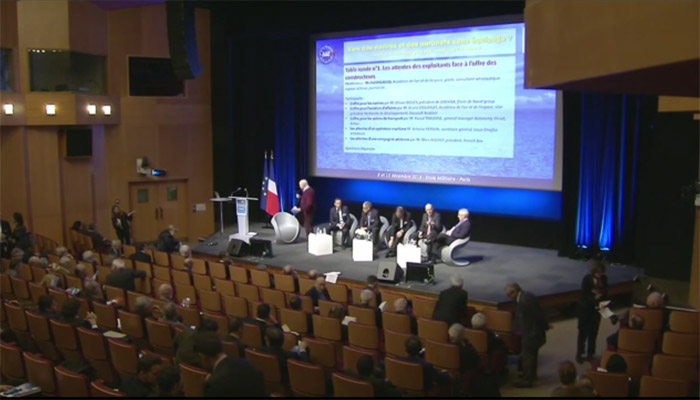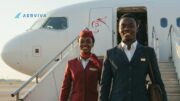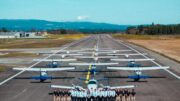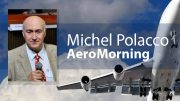On 9 and 10 December last in Paris, the Air and Space Academy and the Naval Academy organised a symposium entitled “Towards unmanned aircraft and ships” at the DGAC headquarters.
This is a subject that has been recurring for a few years, and even more, and which is defended for many reasons. On the one hand, crews have been shrinking for a long time. Where are the “Marconists” or the “Radios”, the “Navigators”, the “Flight Engineers”, etc.? Their professions have been merged and then gradually disappeared, driven out by technological progress. But we are touching the bone. Should the number of “pilots” be reduced, or even abolished, in order to entrust their tasks to automatons, or even certain tasks to operators acting remotely? Are the ship and the plane, the helicopter, going to become drones or robots? Will security be ensured, degraded or improved as some prophets, sometimes enlightened, promise? Will the economy be blatant, as some managers who are considered to be precursors assure us?
So, what do company managers, vehicle manufacturers, operators, and even passengers and residents of the areas used by these mobile phones think about safety and the economy? I have taken from this conference a very complete and relevant analysis of our participants that I would like to share, because it realistically illustrates what is most often dealt with in phantasmagoria. (See below the link to listen and see this round table in its entirety).
Marc Rochet, head of Air Caraïbes and French Bee, which operate 15 wide-bodied A330 and A350 aircraft, is clear: We are not asking for the elimination or reduction of the number of technical crew members to one or zero pilots. Our only reflection is on the increasing complexity of the regulations. Layers are being added on top of 70-year-old texts. Crews that are sometimes reluctant to adapt to new things. We cannot ignore the evolutions. Otherwise the profession, out of a concern for simplification, will look at the reduction of crew members as a way out. Managing Air Commanders (CDB), Pilot Officers (OPL), and in addition, now OPGs, “left seat” pilot officers (for long flights, and above 7000 meters of altitude) is a penalizing weight. For him, on long haul flights, two pilots on board will be sufficient on modern aircraft around 2026. The A350 is almost ready for this operation. One pilot acting plus one in rest or reserve. For short-haul flights, the single pilot will probably be introduced in the next 10 years. With aircraft that will have to be specifically adapted and certified. The aircraft without a pilot on board remains a question for three or four decades from now. Minimum. And in any case, specifies this very great professional of air transport, it is not in a concern of economy on jobs that this subject is treated by his company.
Speech by Bruno Stoufflet of Dassault Aviation. There are no plans to reduce or eliminate the number of pilots on business jets. It is just envisaged to make the aircraft even more efficient in order to relieve them of repetitive or complex tasks, so that in a crew of two, one of them can rest on very long missions. And to do without taking on board a third pilot (aircraft are usually smaller). On military aircraft, the mission is more important than the “piloting”, so automatisms are very much used. For the most modern drones, such as the nEUROn, the drones have an automatic return to base assistance! This is starting to appear on some civilian light aircraft. This will be a step forward, an aid, but will not eliminate the need for a pilot at the controls.
In no way is it envisaged for civil aircraft to be piloted from the ground. The reliability of the links, the risk of piracy, the “ultimate” cost of the system exclude this hypothesis.
Pascal Traverse, head of the “autonomy” sector at Airbus Group brings his approach as a major manufacturer of modern aircraft: Our first objective is safety. This means giving pilots more time to manage situations and in particular crisis situations. So helping them. For the moment, there is no question of envisaging large aircraft without pilots, but an operating pilot and a pilot on rest or reserve is a runway that meets the demands of certain companies. But always two pilots on board. The pilot remains a major safety factor. Unlikely that this will change before 2040 or even 2045. Will it still be necessary to certify the planes for this use and with the crews find the intelligent mode of rest of the reserve pilot. As close as possible or in the cockpit area, especially for safety reasons and reaction time. It will also be necessary to take into account the time needed to wake up (physical and mental).
Review by Michel Polacco for Aeromorning.com









Be the first to comment on "With or without a pilot: Marc Rochet’s beautiful speech!"